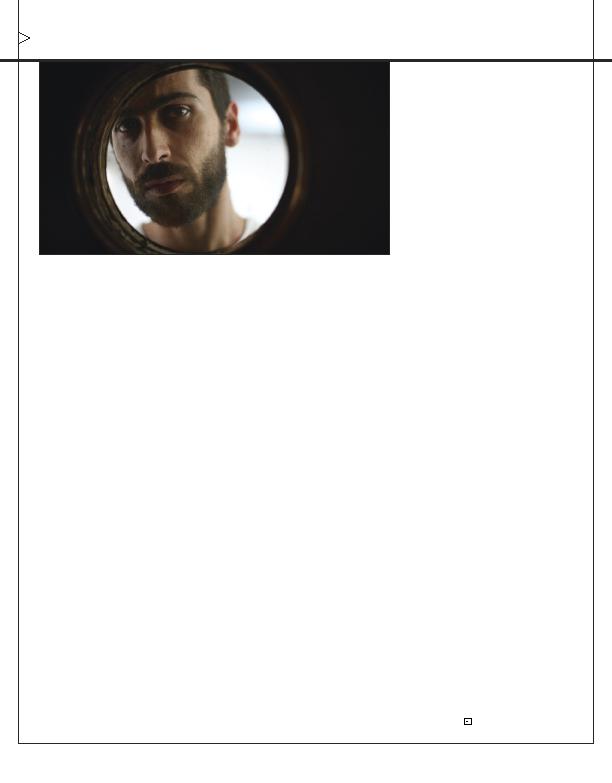
Italian writer-director Luca Guadagnino and
indie stalwart Tilda Swinton, something the
pair first attempted to capture on film in the
intimate 2002 self-portrait The Love Factory. At
face value, all this talk of love must seem
rather mushy, like a brainstorming session at
Hallmark headquarters -- until one considers
the source.
Oscar winner openly maintains a lover and re-
jects many of the assumptions society holds
about relationships -- particularly the one that
sees love as an antidote for loneliness. With the
encouragement of her equally subversive di-
rector, Swinton allowed Guadagnino to turn
her philosophical thoughts on the subject of
love into the basis for a character study -- and
so I Am Love's Emma Recchi was born.
cline of a Family," borrowing the concept of
an outsider who marries into a decadent mer-
cantile family. He was captivated by the notion
of his central character's "secret, mysterious
loneliness within these golden walls" and
made the Recchi character Russian as a tribute
to his mother (who is Algerian), which helps
explain the character's detachment as she's a
stranger to Italy as well. Rather than watching
erations, as the Buddenbrooks do, Guadagnino
focused on a relatively narrow window in
which this selfless matriarch was permitted to
experience an intense, passionate affair with
one of her son's friends.
script and the film was almost entirely in
those pages," Guadagnino remembers. But
that was only the beginning of a process that
took many years and the director is the first
to admit, "I'm very lazy. I don't like to write. I
thrive on partnership." And so, with Swin-
ton's ideas in mind, Guadagnino expanded
the conversation to include other collabora-
tors as well.
lier when both served on a festival jury at a
Torino Film Festival. Alberti helped
Guadagnino write his previous film, Melissa
P., and was happy to accept his invitation to
stay at a beautiful hotel in Bellagio, Italy, on
Lake Como, where they could work on I Am
Love -- only the process was less like work
than it was an applied vacation in which ideas
could marinade.
morning, little walk in the village, then rest.
Lunchtime, then rest. Then a long conversa-
by another little walk in the village, then
sleep." Instead of standing over a computer
trying to find the right words, Guadagnino
spent a lot of time walking, traveling by boat
in the lake and listening to music. "For me,
the process of writing is about finding time to
think and talking, but the thinking is very im-
portant," he explains.
to her process. "It's about the word, the use of
words and it's about this almost inscrutable
volcano that's in Luca's mind," she says. "I am
an old-timer with white hair, but I'm always
happy to go on the rounds with this young
master. It's also about getting the right experi-
ence that the character is going to live -- like
going to San Remo or eating at a restaurant
with the same food."
rector hired a younger writer, Ivan Cotroneo,
to downsize the script. "In the process, we lost
complexity and pace," observes Guadagnino,
who then turned to old friend and editor Wal-
ter Fasano (Mother of Tears) for another round
of discussion and rewriting.
were cut and instead the film begins with
preparations for a big family meal. "It's easy
to have two people in a room, but what hap-
pens when you have 22?" Guadagnino asks. "I
wanted to put myself in the highest, most dif-
ficult position of choreographing people be-
cause this was important for me to step into
another realm of filmmaking." And once
shooting began and budget limitations re-
vealed they couldn't afford the last act of the
film, the filmmakers engaged in another
round of rewriting to introduce hints of reso-
lution into the final confrontational scene. In-
spired by Roberto Rossellini's Journey in Italy,
the epilogue would have reunited Emma, her
daughter and Antonio in another town, ex-
changing forgiveness and kisses in the middle
of a crowd. "Luca is so full of ideas and emo-
tions to share, the problem is sometimes he
doesn't want his movies to end," Fasano says.
never to be in love with my own ideas." And
so he cut the scene, allowing the film to end
on a note of tragedy, liberation, uncertainty
and even hope that leaves Emma's character
more lonely and, as it turns out, more con-
sumed by love.